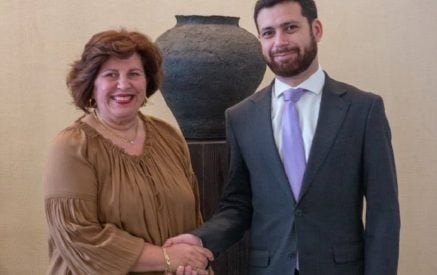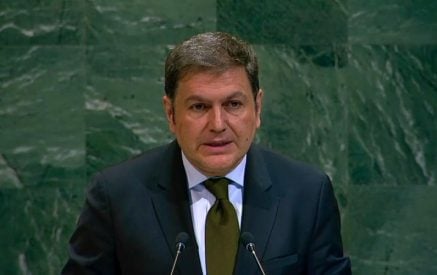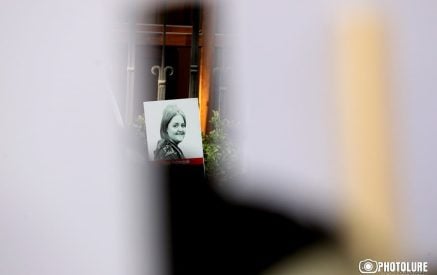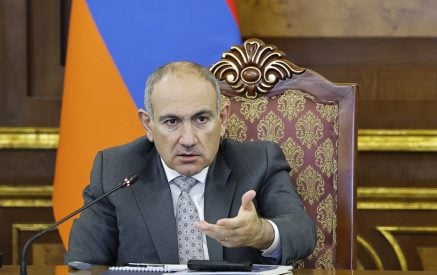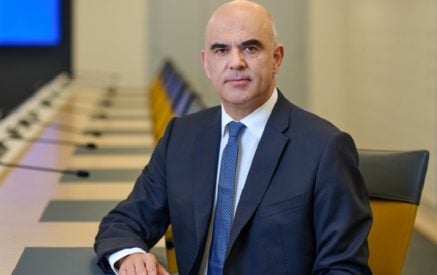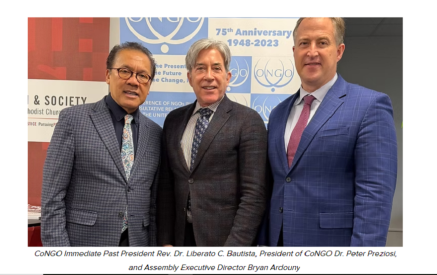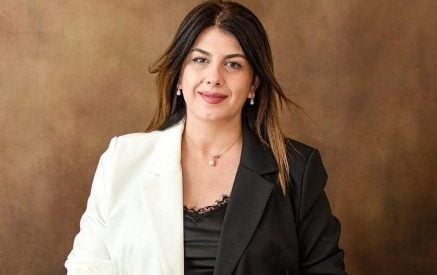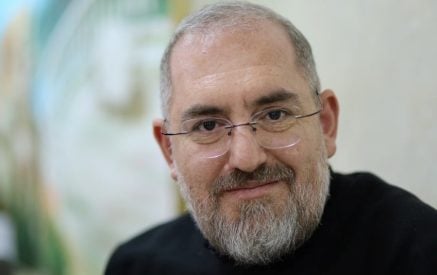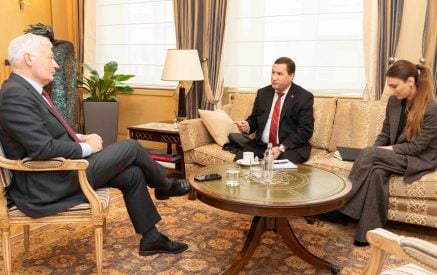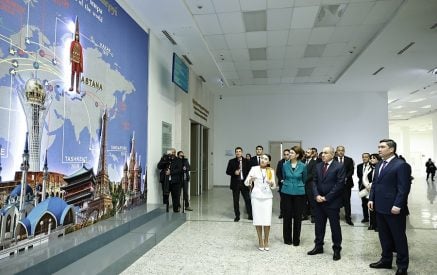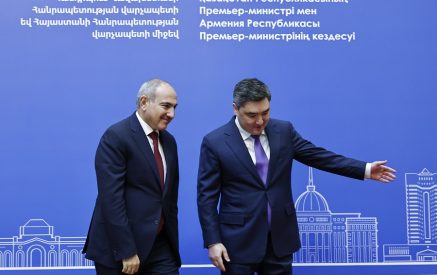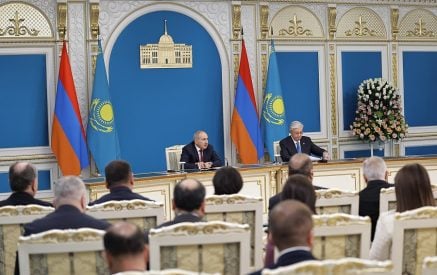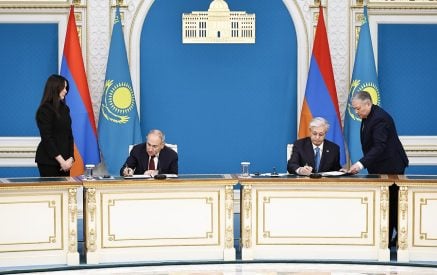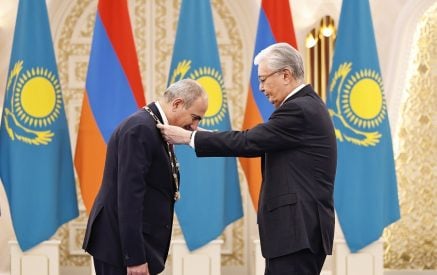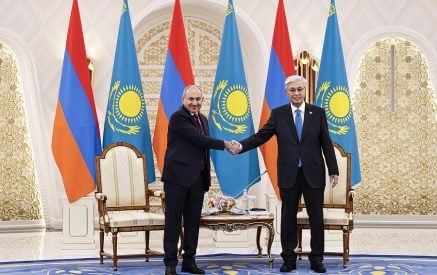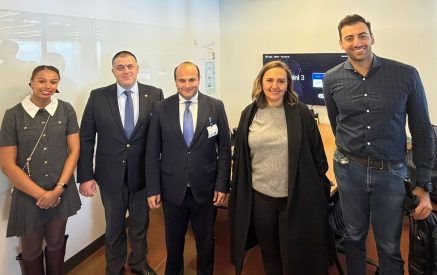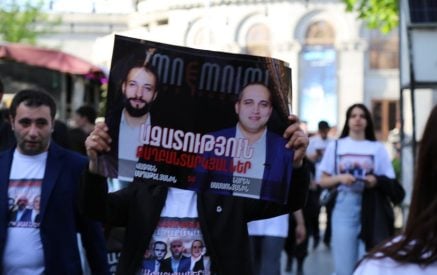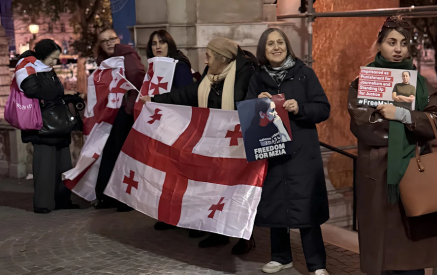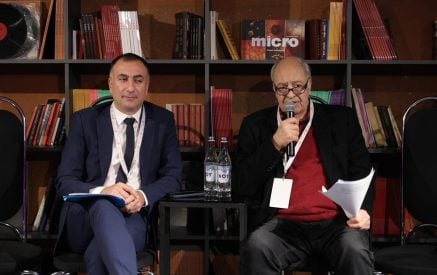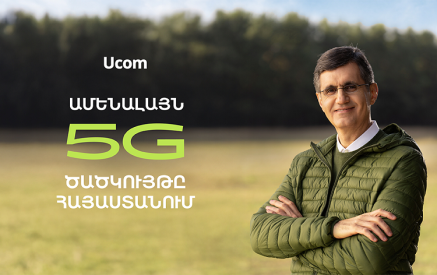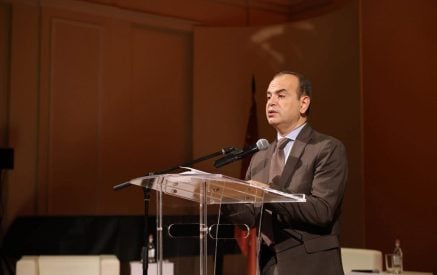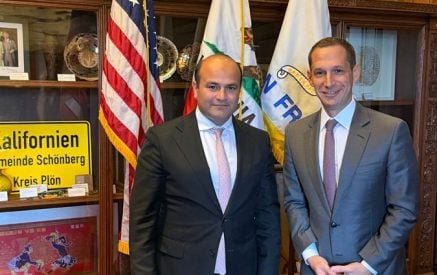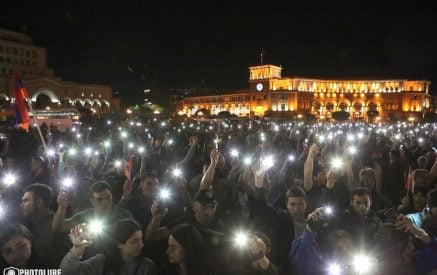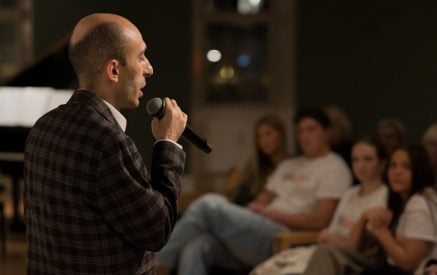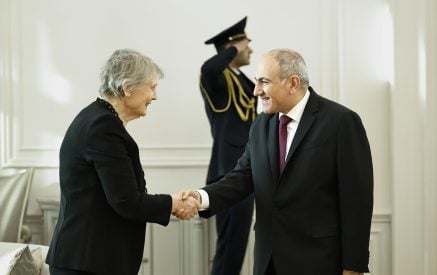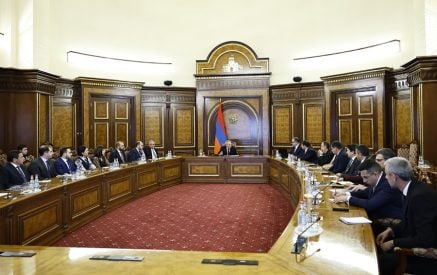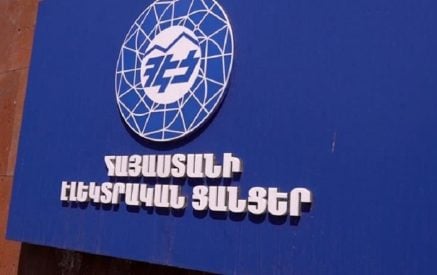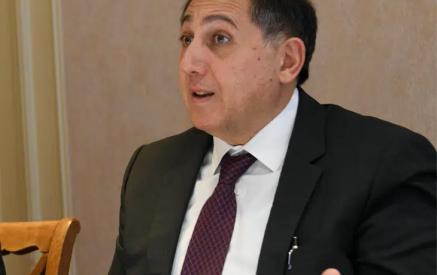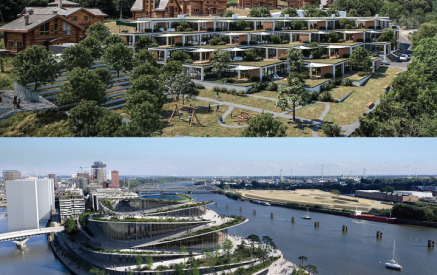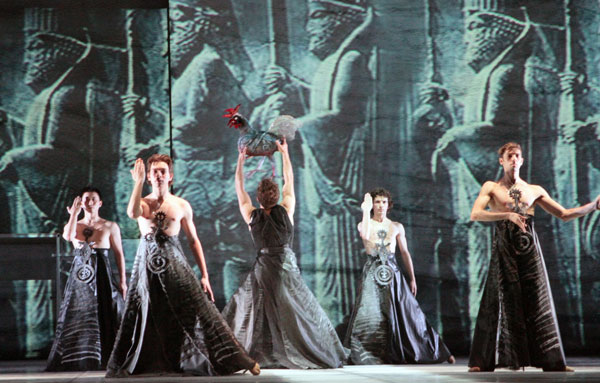Rudolf Kharatyan’s the “Two Suns” combines classic, contemporary, modern, neo-classical and hip-hop styles together in one place
In the framework of the state cultural events commemorating the 100th anniversary of the Armenian Genocide, and under the patronage of the First Lady of Armenia, Rita Sargsyan, the premiere of the two-act performance “Two Suns” by the scenario and choreography of People’s Artist of Armenia, Rudolf Kharatyan, was staged at the National Opera House on May 27.
The music is collective: Mashtots, Narekatsi, Alan Hovhaness, Khachatryan, Babajanyan, Terteryan and Ashot Ariyan. The “Two Suns” is an international project, which includes not only artists from the National Opera Theatre, but also ballet artists invited from Japan, France, the US, Greece, and Israel. The performance combines classical, contemporary, modern, neo-classical and hip-hop styles together in one place. Arman Zazyan, a solo dancer of the Stuttgart Opera and Ballet Theater, acted as Narekatsi, the main cast.
In the interview with “Aravot”, Rudolf Kharatyan just said that several years ago, he was inspired by Narekatsi’s “Book of Lamentations”, and it seemed that the fact that about two weeks before the start of the staging process he learned that the Vatican had granted Narekatsi, the genius of the Armenian medieval mind, the title of the Universal Church of the Master was an approval of the right time chosen and the blessing of the performance. Back to the performance, we must say that it combined the past and the present together, presenting the Armenian legacy through the prism of the 21th century and became such a piece of art, which was innovative, Armenian, eternal and universal. The stage symbolizes the universe, where the tabernacle is the Armenian world (staging and costumes designed by Astghik Stepanian).
The connection between Narek, Arshile Gorky, Toros Roslin and the time through the language of dancing is carried out by the historian (Hovhannes Hovhannisyan). In the first act, Narekatsi’s spiritual path is shaped through ideological and emotional connectivity with 4 evangelists. Passing through 7 levels of spiritual development, he reaches the historian, the “rooster” in the play symbolizes the Christ, the beginning of the earthly life. The cello in the hand of the historian, in Rudolf Kharatyan’s words, is the symbol of art and the creative principle. Narek’s words from the “Book of Lamentations” are also heard here. “Two suns at two sunrises, one of dark, the other of torment. The present does not exist, the past is indefinite and the future is inexact.”
In the first act, the sounds of Babajanian’s Quartet No. 3 are followed by the sounds of Canadian composer Ashot Ariyan’s “Toccata,” in the language of dance – the fire dance. In Rudolf Kharatyan’s words, the fire and the flame among ancient peoples were the symbol of the sun, divine energy, purification, revival, spiritual journey, as well as the symbol of temptation, ambition and inspiration. Narek’s “Eyes like a Sea” sounded, followed by a section from Terteryan’s Symphony No.2, and then Toros Roslin’s world through the eyes of Arshile Gorky and under the music of Mashtots and church psalms … With the time connecting texture, the historian perpetuates the collective spiritual creative idea of Toros Roslin, Narekatsi and Arshile Gorky, Gorky’s abstract world inspired by Roslin’s colored compositions, and the sounds of Ashot Ariyan’s “Concerto-Brevis”. The second act can be briefly described as hope, faith, love and people, where the Virgin Mary’s (Mary Viney, France) prayer to God is presented by Alan Hovhaness’s work. This is followed by a section from Terteryan’s Symphony No 1, Babajanyan’s “Six images” for the piano, Ariyan’s «Planet X» and «Stonehenge». The staged dances represent the eternal driving force of the universe; it reminds that the man originally is given the physical while the spiritual should be developed to achieve harmony. In short, harmonious development and existence of the physical and spiritual in one body. Right here, the synthesis of hip-hop and classical dance is presented, which is perceived as a conflict of periods through the synthesis of classical dance and hip-hop style. The ballet finale is impressive, where you can see the positive charges of the life and the divine intelligence as a foundation of the world. Right here, the two suns under the music of Khachatryan’s Symphony No. 1 are burnt in front of the audience, symbolizing the creative fire of the humanity.
Samvel DANIELYAN
“Aravot” daily





